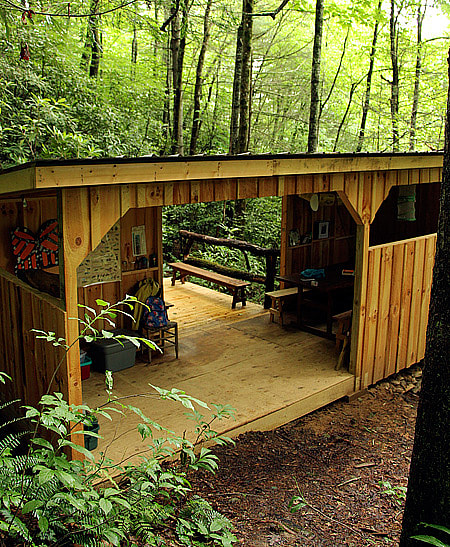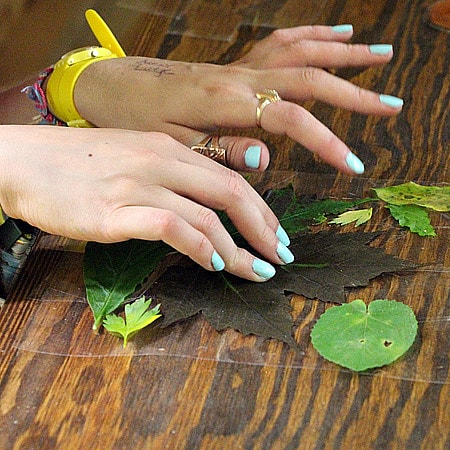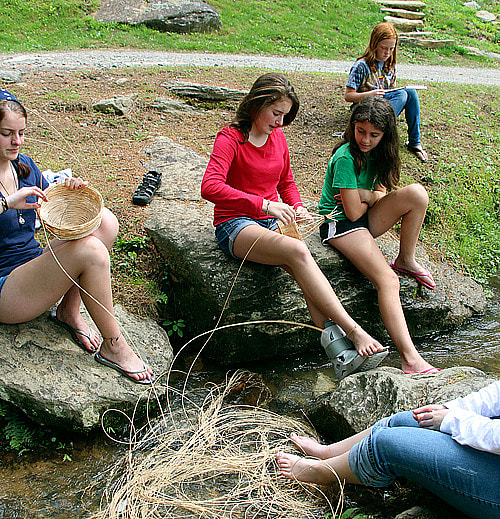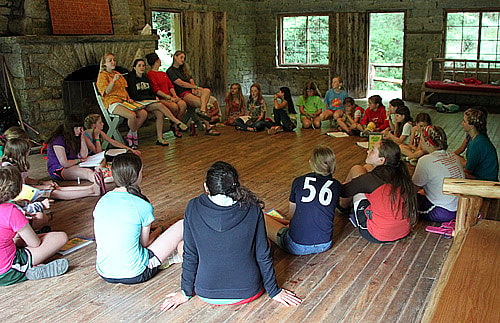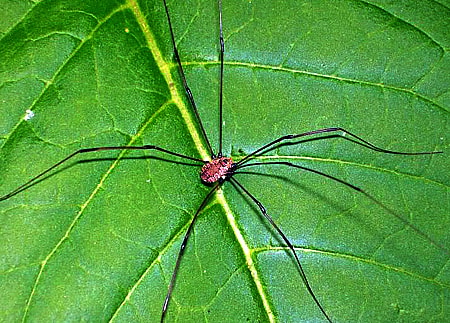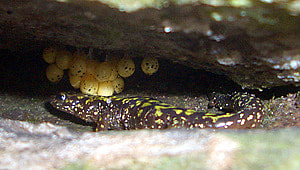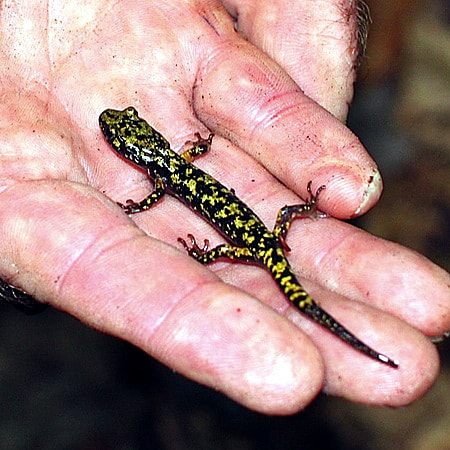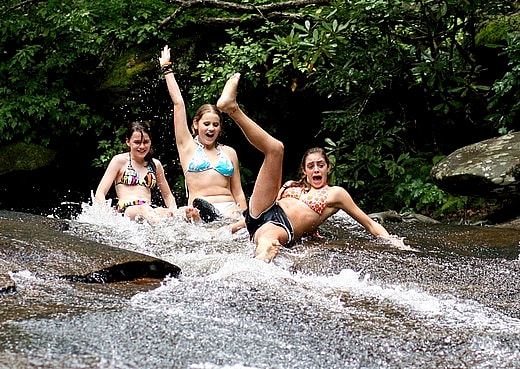One of the ways we often describe Rockbrook is to call it a “forest camp,” a summer camp in the woods, immersed in nature. It has an organic, rustic feeling with lots of big rocks, ancient trees, rushing water, and a healthy population of small plants and animals ripe for discovery by the girls who live here. Instead of crisp landscaped lines, we are happy to allow tree roots to grow across our path, or moss to cover rocks near the lake. We want our experience at camp to include, not be too sheltered from, the textures and patterns of the natural world. Part of our mission is to bring our campers closer to nature, to learn about its complexity, and experience its beauty and wonder. This is a photo of our “Nature Nook,” a small outdoor forest classroom located just down the path to Rockbrook Falls, the largest of the waterfalls on the property. It is home to the activity we simply call “Nature.” For campers who choose it as one their activity periods, counselors lead them on explorations of different trees, leaf collections, creek walks, insect identification, salamander hunts and bird watching. There’s so much to explore too! The 214 acres of Rockbrook are home to incredible natural features, like the cliffs of Castle Rock and Dunn’s Rock for example, but also a few very rare species, like the endangered green salamander.
Another example of an unusual creature found here at camp is the “Blue Ghost” firefly (Phausis reticulata). It’s a small brown beetle, that like other fireflies emits a bioluminescent glow, but unlike the blinking of other species, this firefly lives in the forest and emits a steady greenish light. A few campers have noticed these magical dots of light in the dark woods around camp. They are like shy fairies who glow when undisturbed, but stop quickly when approached. All around us, the natural setting of Rockbrook proves how our “heart of a wooded mountain” is also a magical “fairyland of beauty.”
Today the weavers of Curosty turned their attention to reed, and gathered at the creek to weave baskets. Soaking the reeds in water is an important first step to soften them enough so they can be gently bent and woven. In addition to the standard “under and over” pattern made by the “spokes” (upright strands) and “weavers” (horizontal strands), there are patterns with twists, double strands, and alternating weaves to make more unusual designs. Like many of the other craft activities at camp, weaving baskets is a social event as well as a creative endeavor. It’s a chance to sit with friends and talk while working on a project. In this case, basketry is also an opportunity to soak your feet in a cool mountain stream.
Just before lunch today, the drama instructors held their first rehearsal for this session’s musical, the play the campers perform at the end of the session. The cast is still evolving, and will certainly grow when our mini session campers arrive on Sunday, but we already have plenty of enthusiastic singers, dancers and actors ready to become African animals because the play is “The Jungle Book.” Throughout the session the cast will be learning the songs, practicing the choreography, and memorizing their lines for the show which will be presented on Wednesday afternoon before the closing day of the session. Parents are welcome to attend the show, and we will contact you if your daughter will be performing.
Finally, I wanted to mention the amazing dinner Rick and his team prepared for our “International Day” dinner tonight. He made a Jamaican meal of Jerk Chicken/Tempeh, Samosas (remember that a cabin of juniors helped assemble these!), rice, tomato chutney, pineapple and fried plantains. For dessert he had coconut lime bread with a key lime glaze. Wow! So good!

